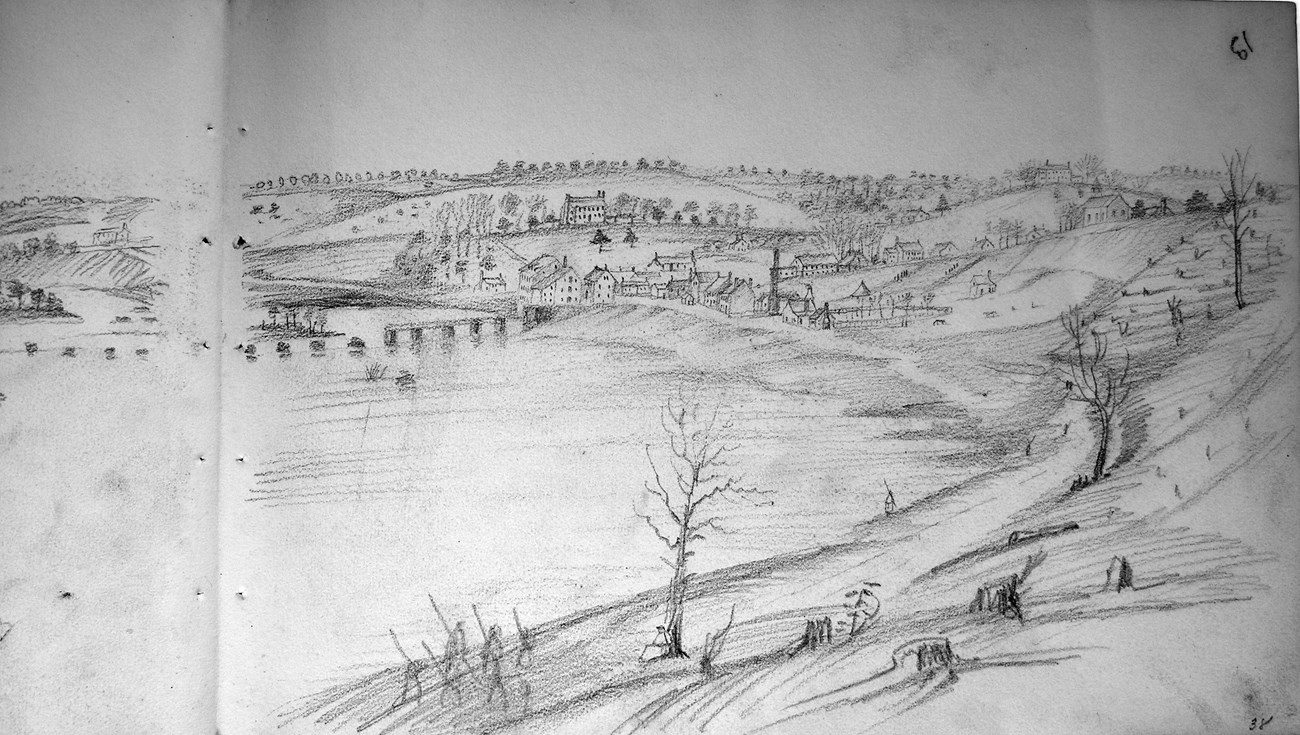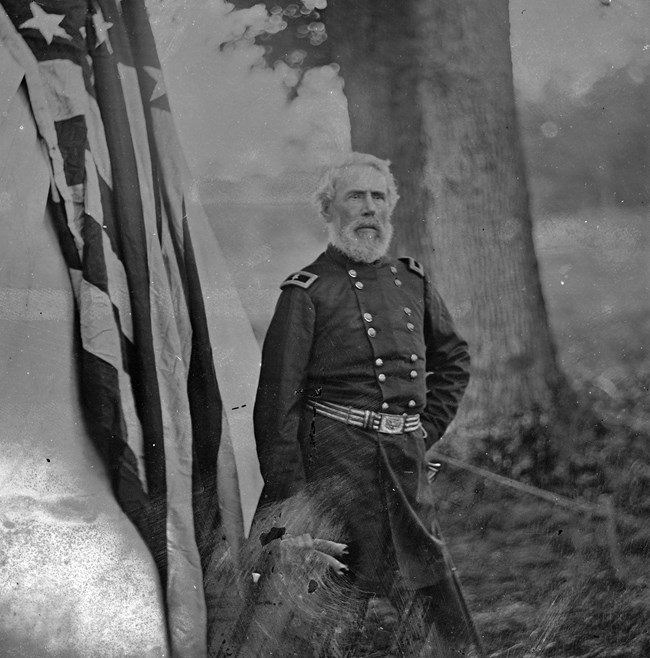Last updated: October 23, 2022
Article
A Fateful Delay: Crossing the Rappahannock

Library of Congress
On November 17, 1862, the vanguard of the Army of the Potomac arrived in Falmouth, just up the river from Fredericksburg. Over the past two days, the United States soldiers had marched nearly forty miles. As the soldiers halted across from Fredericksburg, the question remained: now what?
Burnside’s plan to use Fredericksburg as a jumping off point to move towards Richmond necessitated crossing the Rappahannock River. Instead of quickly crossing, the army stalled as its commanders navigated a variety of logistic troubles. This delay would become one of the defining moments of the Battle of Fredericksburg.
Because both armies had already passed through Fredericksburg, the pre-war bridges across the river had long-ago been destroyed. General-in-Chief Henry Halleck had promised Burnside days before that there would be pontoon bridging materials ready and waiting to get the Army of the Potomac across the nearly 400-foot wide Rappahannock. That, however, did not happen. Delayed by bureaucratic red-tape and poor weather, the pontoons would not arrive for many more days.

Library of Congress
In mid-November, only a small force of Confederates guarded Fredericksburg. So why did Burnside not just find a ford and splash across the river, drive that small force away, and be back on the road to Richmond? There were certainly some officers who supported this option, but Burnside and his senior subordinate, Maj. Gen. Edwin V. Sumner, balked at the idea. It was one thing to send some infantry soldiers across the Rappahannock, but it was another thing to transport wagons carrying ammunition, food, or other critical supplies. Making sure that the army’s artillery would not be separated from the infantry was a significant concern. In addition to these logistics, seasonal rains had caused the river to rise. Burnside and Sumner both feared any infantry they sent across would be cut off from the rest of the army.
So, Burnside would not try to ford the Rappahannock; he would wait for the pontoon bridging materials and hope they arrived before Robert E. Lee’s Confederates.
